Regardless of the type of mycelium growing, they only require light to progress to the fruiting phase of their growth cycle. Whether or not you want them to progress is entirely up to you as the grower.
The optimal growing conditions for this type of fungi are warmth, darkness, dampness, and a slight flow of air to help control the temperature.
Now let’s address the elephant in the room. Does mycelium need light to grow?
Well, the ideal growing temperature is usually between (75-80°F or 24-27°C). Mycelium prefers the darkness to grow as it helps keep the moisture from drying out, enabling them to continue replicating. When it does come time to allow light into their environment, it must be subtle and non-direct.
They usually need only 1-2 hours of indirect light per day to properly fruit. In this article, we’ll go through the exact light mycelium requires and how much of it is enough. Let’s dive in, shall we?
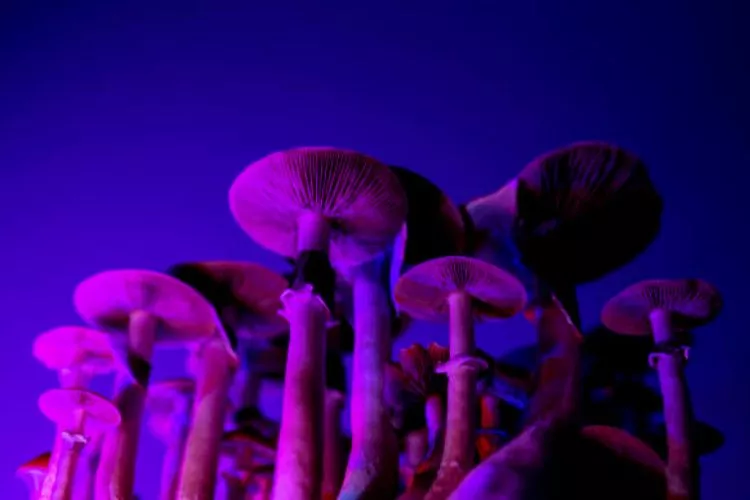
Table of Contents
Does Mycelium need light to grow?
Mycelium grows by consuming any organic material in its area, which turns into usable energy. They have different anatomy to green plants meaning they don’t have the same chlorophyll or even roots which use photosynthesis via the sun to grow.
Instead, they start as tiny spores that are shed by mushrooms. The spores grow and turn into single hyphae. When 2 hyphae meet, they combine to form mycelium.
This mycelium can then go 2 ways. It can either be exposed to any kind of light, where it will turn into a hypha knot, then pinhead (baby mushroom), then mushroom in its last form.
Or it can continue to colonize as mycelium and spread until it becomes exposed to light. Of course, you would see an explosion of mushrooms at this stage all at once. So, the light is what triggers the mycelium to evolve.
What kind of light is best for mushroom growing?
When cultivating mycelium and/or mushrooms for personal use, we must consider how they grow in nature. You often find them on the forest floor. They only colonize in the darkness.
This can be under logs or branches or nestled between trees and rocks.
Once 75% of the colonization is complete, they can be exposed to light which helps them fruit. This usually comes in the form of the sun peeking through a tree canopy or even reflecting off a small body of water. They can also be kept in the dark, which allows them to expand their colony.
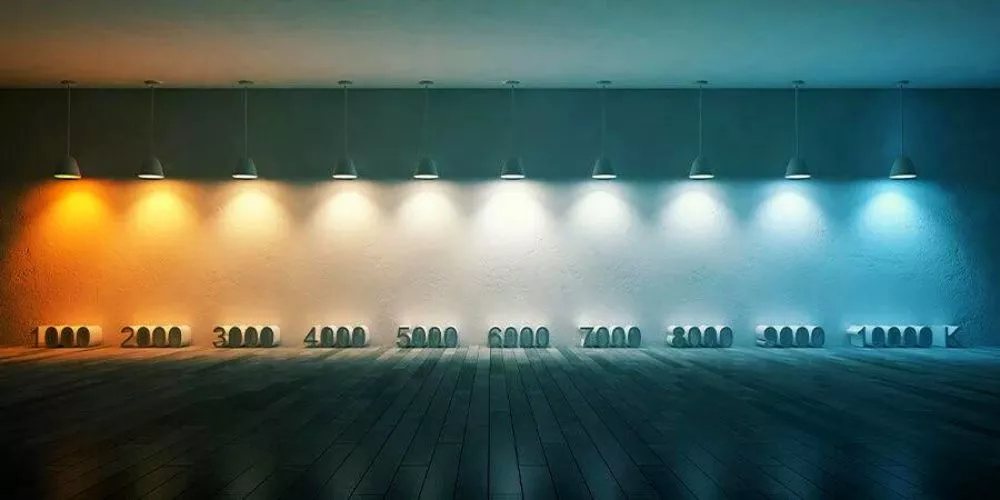
Does Mycelium Need Sunlight To Grow?
Mycelium doesn’t need sunlight to grow, but it does help the fruiting process when the time comes. Generally speaking, light that simulates their natural environment is the best type of light to trigger fruition.
Given that they receive very little in this environment, it would be safe to assume that they also require minimal light hours when growing them artificially.
Optimal lighting conditions for the mycelium to grow and fruit can include indirect sunlight or some kind of artificial light. There is no ‘better’ option as they both offer what the process needs.
A dimly lit basement or under-the-sink arrangement can be a good way to grow. They can still receive small amounts of light while maintaining moisture.
Should mycelium be in the dark?
Mycelium should be exclusively grown in darkened conditions until the point at which you want them to be fruit (from mushrooms).
Too much light will speed up the fruiting process when the time arrives but risk being contaminated. Lesser amounts of light are optimal as the risk of contamination is almost zero, and the growth is easier to manage.
How Much Light Do Mycelium Need To Grow?
Mycelium is the stage of a specific type of fungus growth. They don’t need any light to grow. However, if the grower chooses to proceed in bringing the mycelium to the fruiting stage, the light requirements can vary from species to species.
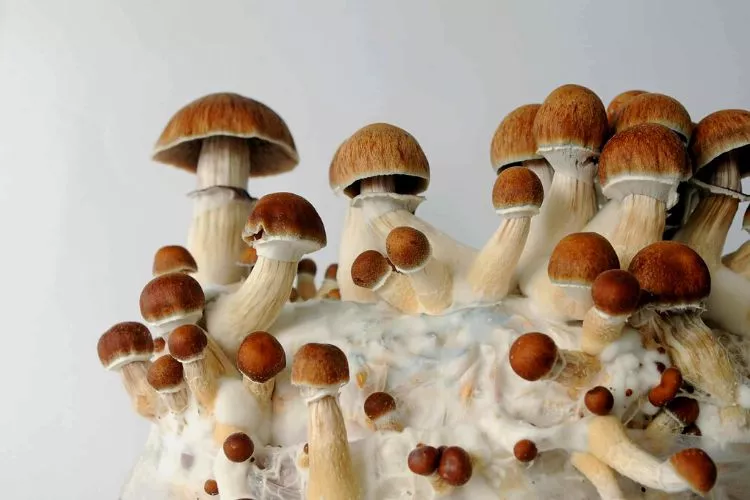
Some require minimal; this can be 1-2 hours of indirect sunlight daily. Some growers opt for using 12 hours and 12 hours cycles. Certain species can grow from spores to mushrooms without any light whatsoever. There is no universal rule of light.
Does mycelium need light to spread?
If you want mycelium to spread, it’s best to keep them colonizing in the dark. They will continue to feed on decaying and/or dead organic matter in dark, damp conditions.
This will enable a spread to occur. Once they become exposed to light, the spreading comes to a halt as the fruiting stage begins. Light is the trigger for fruition.
Do All Types of Mycelium Grow in the Dark?
It’s fair to say that almost all mycelium species grow in the darkness. A handful doesn’t require any darkness to grow and fruit, but the majority do. The ones that don’t are your common store-bought white button varieties and a couple of others.
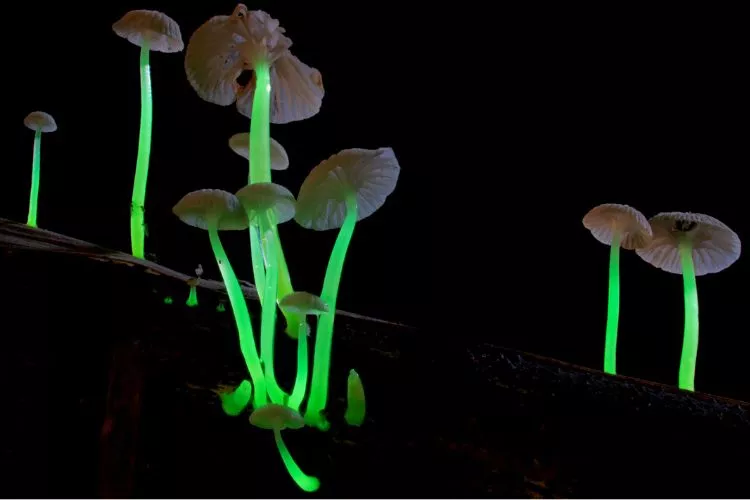
As mentioned earlier, the darkness stops the moisture from drying out. Mycelium spores can reproduce in damp areas. The darkness just keeps them damp; it’s as simple as that.
List of Mycelium that needs Light to grow
There are a couple of well-known fungi types that thrive much better when light does strike upon them. They are more common as a culinary ingredient, though. They are often grown en masse in specially designed grow houses worldwide. From there, they can be distributed to supermarkets for us to purchase and consume.
These common household mushrooms that can grow from spore to full maturity in full sunlight include:
Agaricus bisporus (White button mushroom)
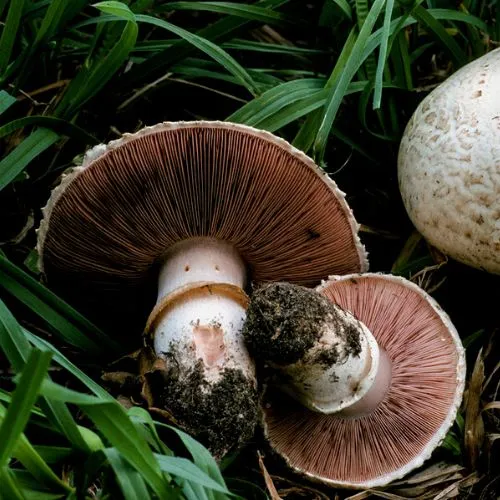
Commonly known as the white button mushroom. This mycelium species has been grown and engineered in over 70+ countries. It’s easy to grow and doesn’t require many resources to produce a large amount.
They grow wild in most regions of Europe, Northern America and Australia. This species is the most common supermarket variety.
They are usually brown and white and can grow anywhere up to 10-15 cm at their peak.
Stropharia Rugosoannulata (Wine Cap Stropharia, Garden Giant, Burgundy Mushroom, King Stropharia)
The Stropharia Rugosoannulata can be found growing in both Northern America and Europe late in the late summer and early autumn.
Surprisingly, it was only discovered and noted in 2018 by Columbian biologists.
This mycelium species can grow up to a remarkable 20cm in height and 30cm in width.
When studied, its texture resembles that of asparagus with its thinner, hard stalk, and it is said to taste a little like a mild potato variant cooked in red wine.
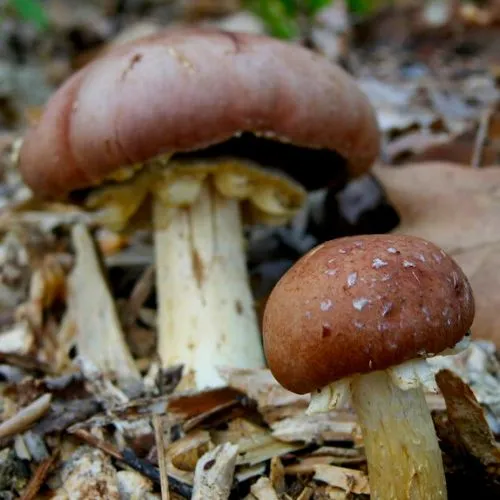
Chanterelle (Cèpes, Porcini Mushrooms)
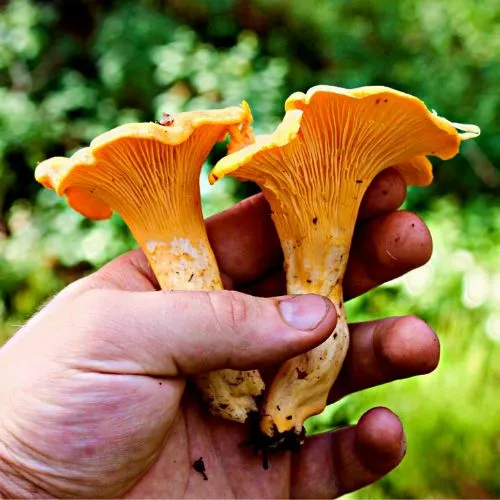
Chanterelles are often found on forest floors or nestled between log openings. Like all mycelium, they don’t require light to grow from spores as they colonize beneath the substrate surface.
When the sunlight begins to peak, they will explode wavy yellow mushroom heads with mustard colored stalks.
They can be found in most areas of mid to northern Europe. They have a slight apricot aroma but pack more of a mild peppery taste.
Coprinus Comatus (Shaggy Ink Cap, Lawyer’s Wig, Shaggy Mane)
This common mushroom can be found predominantly in China. It is usually found growing on waste areas, lawn coverings, open fields, and even roadsides.
Coprinus has this shapeshifting process where it first turns black and then dissolves to almost disappear straight after being removed from its growth point.
It is considered a delicacy as it is known for its shapeshifting abilities. The consumers must eat it before it dissolves to avoid disappearance.
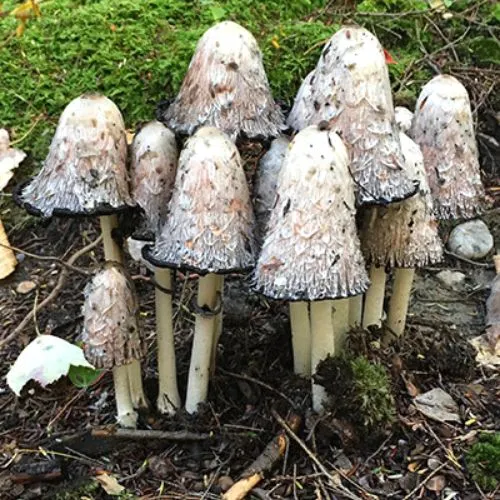
How does light affect mycelium?
Mycelium is more the stage of a mushroom’s growth, so they don’t require any light. The mycelium grows and colonizes underneath the ground until they are mature enough and peak beyond the surface. At this point, the light that now becomes available to them helps trigger their fruiting process.
Mycelium increases its colony size by releasing small enzymes from its hyphal tips. These enzymes metabolize the dead or decaying organic matter, which gives the mycelium nutrients and even more energy to continue to expand. The cells of the mycelium multiply and branch outwards.
This helps to structure its vast, filamentous mycelial network. As the colony increases in size, it pushes out and through its growing substrate. At this point, any light it is exposed to triggers the fruiting process. They go from hyphal knots to pinheads (baby mushrooms) to full maturity.
How Light Triggers Mycelium to Fruit Mushrooms?
Now we know that mycelium needs light to trigger its fruiting phase, but how exactly does the process occur? The mycelium grows, multiplies and expands in the darkness. They can do this for seemingly an unlimited amount of time.
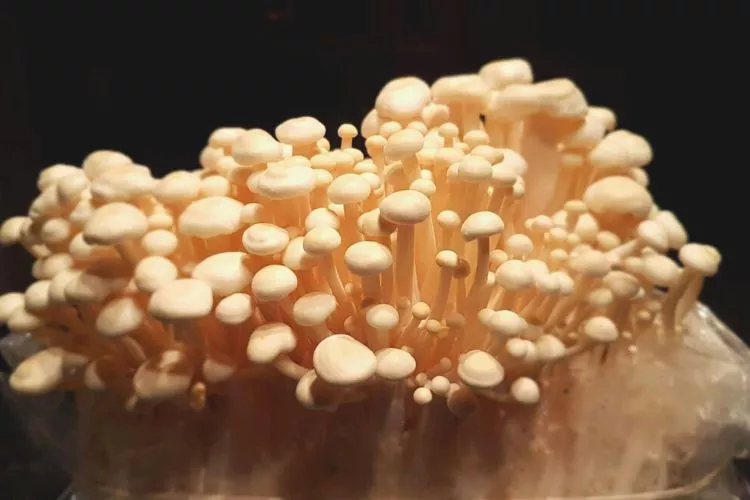
Once their colony breaches darkness, the light they are subject to almost instantly shuts down the colonization process. The mycelium will stop spreading and instead transform into a hyphal knot above the ground. These look like small button heads sitting just above the breach point.
As the hyphal is now above ground, the light has easier access and continues to encourage it to form a stalk, followed by its final form as a fully matured mushroom.
So for any species of fungi to go full circle, it needs the final fruiting phases to occur so it can grow to complete maturity. Once they reach the mushroom form, they will only shed spores to enable the cycle to start again.
What Are the Other Environmental Conditions Necessary for Mycelium to Grow?
For a successful mycelium colony to form, they require a few specific environmental conditions. These conditions can be put into 2 categories depending on their growth phase.
Mycelium colonization conditions:
- Light Conditions/Darkness – The darkness allows moisture to be retained and used to assist the metabolizing process. Colonizing mycelium doesn’t need any light; it can even hinder its growth rate. The spores prefer full darkness to enable reproduction.
- Growing Substrate – Generally slightly acidic, containing dead or decaying organic matter with adequate moisture.
- Optimal Temperature – This may vary depending on the species. Warmer temperatures increase the spread of colonization but encourage contamination. Cooler temperatures decrease colonization speed but won’t contaminate. (75-80°F or 24-27°C) is optimal for most species.
- Adequate Air – Airflow is essential for expansion and regulating temperatures. When mycelium consumes energy, they create warmth, which heats its growing area. Airflow assists with keeping the area cool.
Mycelium fruiting conditions:
- Indirect Light – 1-2 hours per day of indirect sunlight or artificial light is adequate to encourage fruiting. If growing for food, this is essential once around 75% of colonization is complete.
- High Humidity – Humidity helps form and shape to occur. It stops cracks from forming as well as discoloring and drying out.
- Optimal Temperature – Fruiting mushrooms need temperatures around 50-77°F (10-25°C). Regulating these temperatures ensures that they fruit as fast as possible.
- Adequate Air – Airflow assists with temperature regulation as well as spore distribution. Airflow also separates the compact nature of the mycelium, which signals to the fungi that it has space to grow.
Conclusion:
So as we have discovered, mycelium isn’t a species of fungi but instead a phase that all species of fungi go through. They don’t need light to grow, but once they reach the fruiting stage, the light will trigger the process. That’s, of course, if they reach that stage.
Some can stay underground and colonize almost indefinitely! Anywho, we hope that this article has been helpful, and we look forward to creating more just like it to help you on your gardening journey. As always, happy growing!


